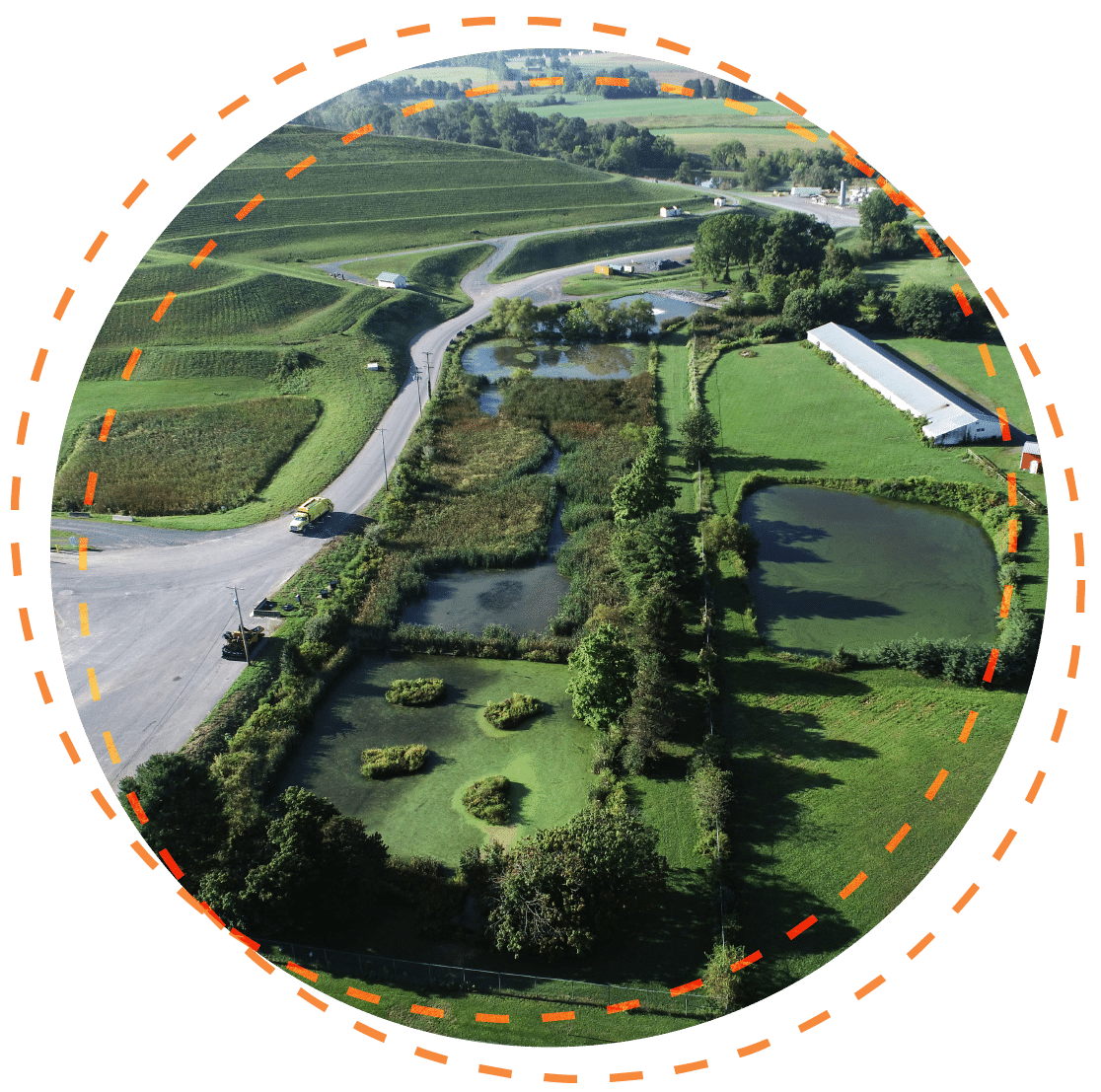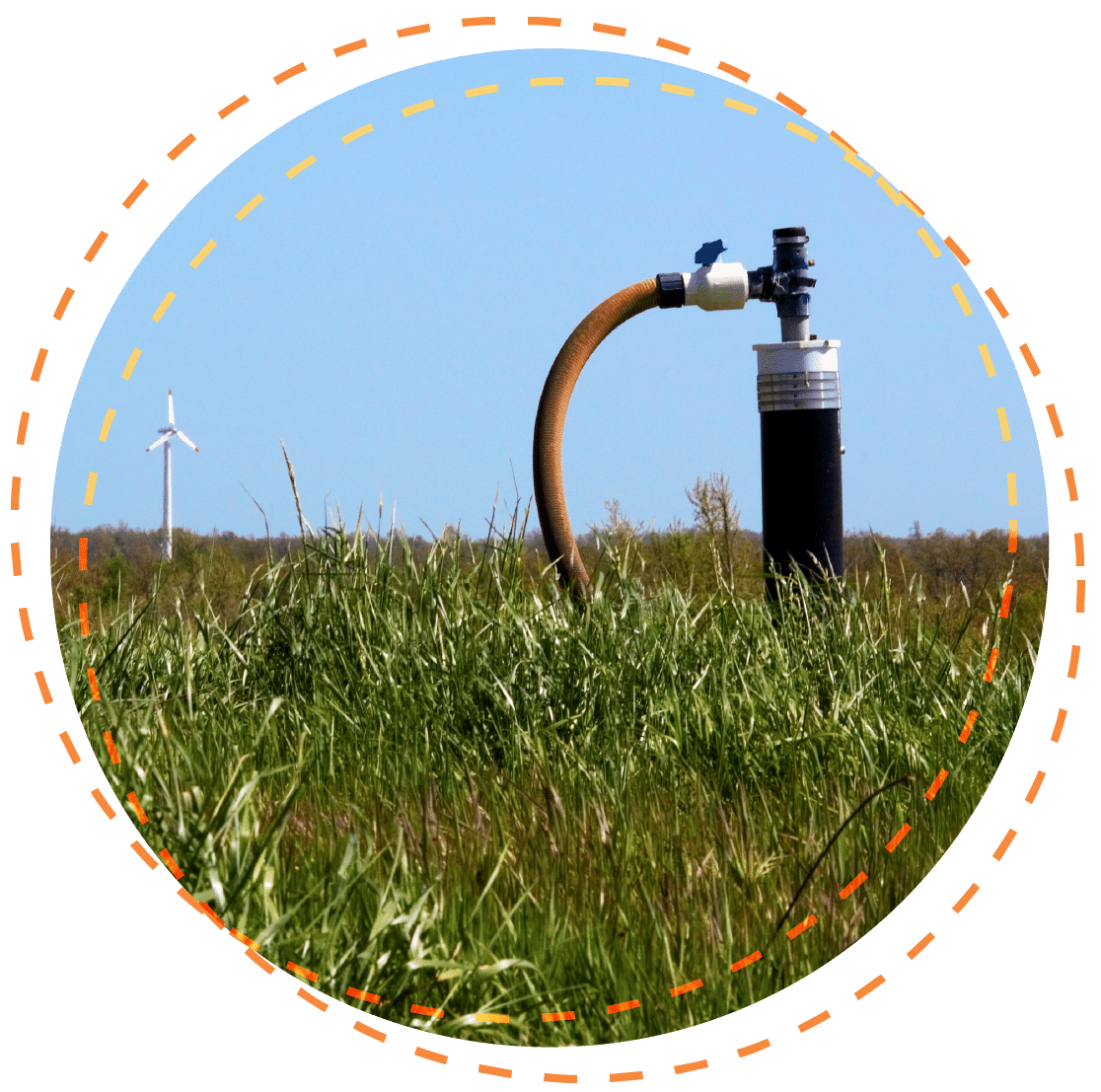
What is landfill gas capture?
Landfill gas capture, also known as landfill gas recovery or landfill gas management, refers to the process of collecting and utilizing the gas that is produced by the decomposition of organic waste in landfills. As the waste decomposes, it generates a mixture of gasses known as landfill gas (LFG), which consists of methane (CH4) and carbon dioxide (CO2), with small amounts of other gasses, such as nitrogen, oxygen, and trace volatile organic compounds. Methane by itself is an extremely potent greenhouse gas (GHG), which is over 25 times as powerful as CO2 and a major catalyst in ozone pollution.
How does landfill gas capture work?
Collection and extraction:
A network of strategically-placed wellheads and piping systems are installed throughout the landfill site to collect the gas as it is produced. Blowers or vacuum induction systems are used to draw the gas from the landfill to a nearby processing station.- Processing and flaring:
In many basic landfill gas capture sites, the captured methane is sent through a processing center to remove moisture, so it can later be destroyed by way of an onsite flare. - Utilization:
An alternative to flaring is to burn the methane to generate energy. Depending on the end use, the methane will typically require additional processing to remove any compounds, such as siloxanes or hydrogen sulfide, before it is sent to a compressor and generator set where the gas can be utilized as an energy source.
What are the benefits of landfill gas capture?
- Greenhouse gas emissions reduction:
Landfills are the third largest source of human-made methane emissions, making them one of the most obvious sources to direct our attention to in our fight against global warming. This carbon reduction project type often stands above the rest because landfill gas projects can utilize the captured methane in fuel alternatives or to produce electricity. - Health and safety:
Landfill gas is a harmful pollutant, so capturing the gas directly impacts health conditions and air quality in the surrounding area. Quite often landfills are the source of unpleasant odors to the surrounding communities, which landfill gas capture and combustion all but eliminates. - Energy generation:
The captured methane gas can be used as a renewable energy source to produce electricity, heat, or renewable natural gas, oftentimes utilized by the surrounding communities. This power generation method is another great way to limit our dependencies on fossil fuels.
By the numbers:
- There are more than 2,000 active landfills in the United States alone.
- The most recent calculations by the Inventory Report, U.S. landfills release an estimated 122.6 million metric tons of carbon dioxide equivalent (MMTCO2e) of methane into the atmosphere annually, representing nearly 17 percent of the total U.S. anthropogenic methane emissions across all sectors.*
- Methane itself is 25 times more potent than CO2 over a 20-year period.
- On average, one million tons of landfill waste will emit nearly 430,000 cubic feet of landfill gas a day, enough to generate 780 kWh of electricity or 216 MMBtu of heat.
- Landfill gas capture technology will abate emissions from upwards of 90 percent of the methane generated at the landfill.
View other project profiles or contact us.
*epa.gov


